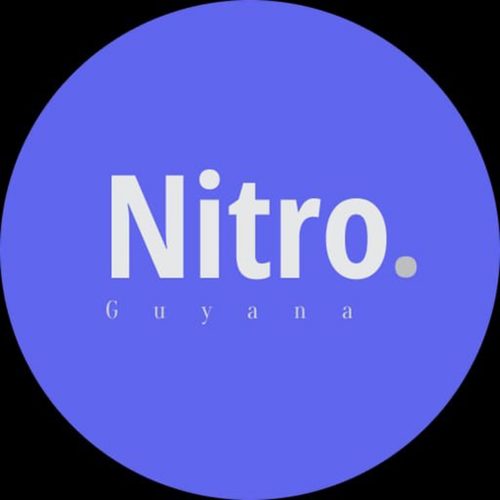A new online-based taxi service, Nitro Guyana is seeking to make its imprint on the local scene by providing a faster and affordable option of soliciting a cab.
The business which was conceptualised by Ricardo Persaud, an overseas-based software engineer, is gearing up to launch later this month and has already attracted applications from over 300 drivers with the majority of them coming from Georgetown area.
Nitro Guyana’s philosophy is that a driver should not be driving around looking for passengers, but rather, focus on going to specific location.

A customer after signing up can log on to the website and request a cab. In their request the customer will input information such as their pick-up point and their destination. After that information is received, it will be sent to drivers who are within the area and they will provide offers.
“Once you have done that, the driver will send you a quotation you can both agree to it and accept the ride or you can wait for the next option. In some cases you will have multiple options depending on the amount of drivers that respond and you can view and decide which driver is the best option for you,” Persaud, who currently resides in the US, explained concerning the functionality of the web-based platform.
For drivers, the company’s Facebook page explained the way the system works, “You pick a location and see whatever rides are available in that location. Send offers to as many passengers as you like. Whoever accepts your offer first gets you as their driver. Then when you are at your new location just ensure the village displayed is the village you are in. And repeat the process.”
According to the 30-year-old software engineer who also functions as the Chief Executive Officer of the company, once the passenger accepts the cab, they will be sent a pin, which can only be accessed by the two parties. This he said is to verify drivers are picking up the right customers.
Once the ride is accepted a chat box opens and the driver and passenger are now able to communicate effectively.
He related that one of the benefits of the service is upfront pricing which will allow the passenger to say how much they are willing to pay. The fees for drops are set by the driver individually.
“We didn’t want to be involved in the way the drivers do their business beyond the point of connecting them to the passenger,” Persaud underscored. In the startup phase, he noted that they will be accepting cash and later make provisions for electronic payments.
According to him, drivers who utilise the service stand to benefit significantly since they would not have to pay a base fee and will only pay a percentage from the drop.
“We charge a max of 3% rounded to the nearest $10. If you’ve completed a ride where you charged your customers $1,000. The most we’ll charge is $30 for that ride,” Persaud related while noting that when calculated it works out to be 70% cheaper than the monthly base fees.
Persaud said they have conducted tests on 2G networks to give users optimum use of their data plans. “Our site is designed to be small and fast. Data per visit is approximately 3kb and less than 30MB data is needed per month if a driver plans to utilise the service daily”.
He said that all drivers will be vetted and during the sign-up period they will be asked to submit documents upon registration.
The company, he said, is working on a plan to award drivers with a Nitro Badge, this he explained is a verification of drivers and passengers with good standing in the operations.
“With this badge we hope it gives the driver and passenger some security and integrity. For instance if a regular passenger is in an area that might be risky, having the badge will let the driver know this is a verified and legit customer. On the other hand it would boost the passenger’s confidence to know they are travelling with a reliable driver,” Persaud added.
Noting that his initiative is different from what companies were trying to do some five years ago, Persaud explained that this new option is guaranteed to work since they do not have maps integrated into their platform.
He stated that the gaps the companies aimed to cover were too wide and because there wasn’t the intention for a culture shift, it just was not feasible.
“Guyana currently does calling to get a cab. You can’t go from that to an Uber-like solution. The effort to cause a cultural shift will be too great. What Nitro proposes is an incremental step, part Uber-like and part texting-like by typing in your ride details,” he stated.
In his view, however, his platform will eliminate the challenge of having to call multiple taxi bases to solicit a cab.
“I have been in Guyana and you have to call different bases to get a car sometimes even call back to find out if they are sending a car and where it is. So that is one of the reasons why I thought this would be a good idea to eliminate all of that,” he added.
With data being costly it was not feasible to utilise a map integrated system since it consumes a lot of data.
“Uber even recommends having an unlimited plan if you are using their platform as a driver. This disqualifies the iRide eCabs approach immediately. Also there wasn’t network latency. Network latency in Guyana is poor or inconsistent in testing. This is vital for mapping,” he added.
Persaud went on to say that the application failed too because there was no incentive for drivers or passengers to switch from the current standard to the solution that was being proposed.
In 2017, mobile application taxi service Drop pulled out of the market as it said operating here is not feasible due to difficulties in encouraging a cultural shift. Despite commitments from Ecabs and iRide, two other applications to remain on the market, they were unable to take off facing similar challenges.
In 2018, both Ecabs’ and iRide’s principals said they are working to address challenges, including the poor quality of mobile internet services, to ensure their mobile apps could effectively function in the Guyanese landscape but they eventually flopped.




